9 Contemporary Artists to See in Oita
Oita Prefecture on Japan’s southern island of Kyushu is a place of scenic mountains, coastlines, and hot springs. It is also rich in culture ranging from centuries-old Buddhist rituals to the latest contemporary art. Art Site Kunisaki Peninsula, led by the NPO Beppu Project, is drawing attention to all that Oita has to offer with art projects adding sustainable value to local communities. Tokyo Art Beat participated in a Beppu Project tour of some of Oita’s creative highlights. Here are a few artists with works in the prefecture to check out.
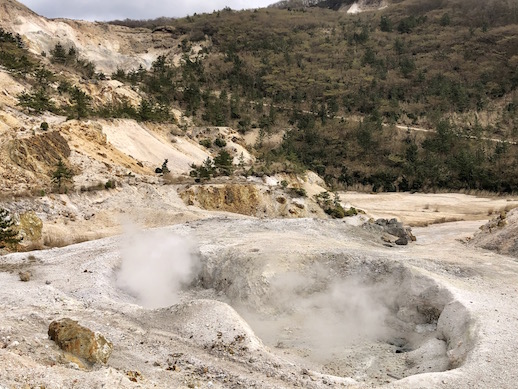
Tetsuya Umeda
Tetsuya Umeda is the featured artist for this year’s in Beppu, an event selecting a single creator to present works in the capital city of Beppu and the surrounding area. For his project Zero-Tai, Umeda has created an interactive experience in which participants tour Beppu using a map and handheld radio. Destinations include geographical features and spaces unique to the region, such as the Tsukahara Crater, the grounds of the former Tsurumi-en amuseument park, and Spa Beach. The radio broadcasts offer the artist’s thoughts and snippets of sound from various points in time. A film shot by Umeda at the featured locations is shown at the historical movie theater Beppu Bluebird Theater.
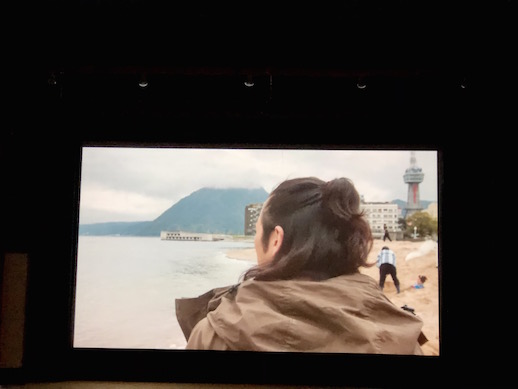
Antony Gormley
The celebrated British sculptor Antony Gormley chose the edge of a cliff on Oita’s Kunisaki Peninsula as one of the sites for his “Another Time” series. Reaching Another Time XX, an iron sculpture of a man gazing east out onto the horizon, requires a strenuous trek up the mountain. Installing the work required careful designs, multiple attempts, and the expertise of locals. The monument stands as “an attempt to bear witness to what it is like to be alive and alone in space and time.”
.jpeg)
Shimabuku
The artist Shimabuku works with landscapes to create installations inviting quiet reflection on their surrounding environments. He currently has four works on the Kunisaki Penninsula from which the Seto Inland Sea can be observed.
The mountain Gion is the site of a pair of Shimabuku’s works. “The Glowing Road: A Path Without Stairs” begins at the entrance of a small shrine that for hundreds of years has been accessed by climbing up a steep slope without any steps. Shimabuku has intervened in the landscape and installed a handrail to help people reach the top. Climbing the slope while grasping the rail, which lights up at night and can be seen from planes, is a part of experiencing the artwork.
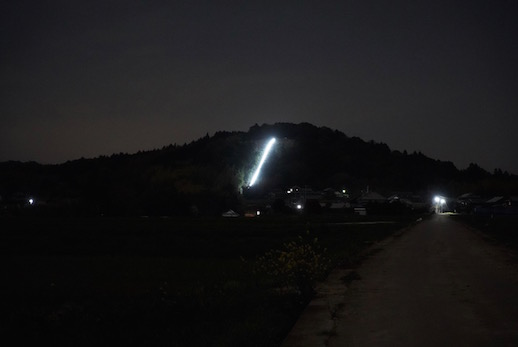
At the top of the slope, we find “Necklace: Carrying Stones Up the Mountain,” a circle of stones from all over Japan. Shimabuku has placed some of the larger rocks and invites visitors to leave stone offerings of their own, creating a “necklace” for the mountain. The work, which alludes to the area’s history as a meeting point of intersecting cultures, stands in front of Yasaka Shrine.
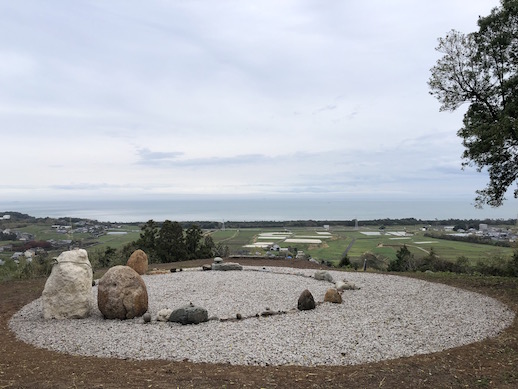
Breath juts out into the sea. On the end of a jetty on Kunisakimachihama Beach, Shimabuku has installed a single streetlight that “breathes” by blinking on and off at night. Its respiration is meant to speak to the people who come to receive its messages in the calm, meditative spot.
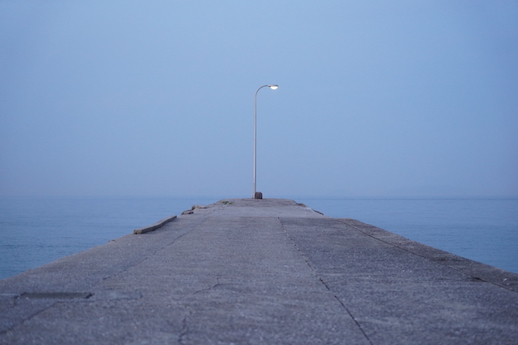
For the work Manose, named for its location, Shimabuku found a rocky sea-surrounded path just off of a highway. Text on the road partition asks visitors to step out onto the peculiar peninsula, which disappears to leave an island when the tide is high. The sign instructs: “Look for a stone with a hole in it. Stand up pieces of driftwood. Stack stones on top of stones.” Shimabuku believes that past, future, and present selves meet in these simple acts.
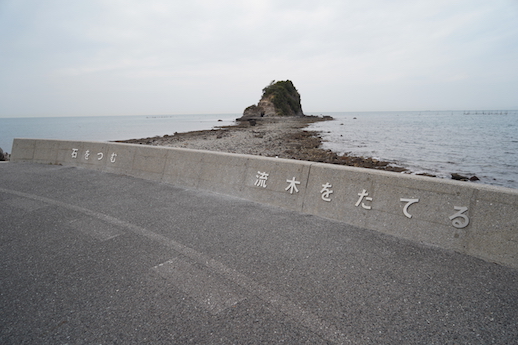
Tatsuo Miyajima
Tatsuo Miyajima is known for his digital counters symbolizing lifespans and cycles of life and death. His Hundred Life Houses is comprised of 100 of these glowing counters, each enclosed in its own box-like habitat on the side of a cliff formed by volcanic eruption. The speeds at which the numerals ascend and descend were decided by 100 people who participated in a workshop with Miyajima.
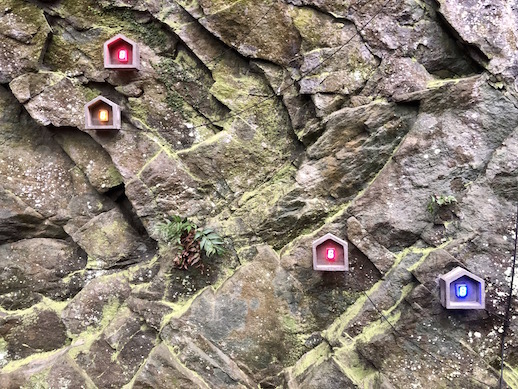
.jpeg)
Tadashi Kawamata
Venice Biennale veteran Tadashi Kawamata creates large wooden structures that emphasize audience interaction. In the Kibe area of Kunisaki, he has built La Chaire (Church Pulpit), an open-air work resembling the preaching pulpit and pews of a church. This installation, where events like concerts and even weddings take place, pays tribute to Father Petro Kasui Kibe, a persecuted 17th century Jesuit priest from the region who became the first Japanese person to visit Jerusalem. Changing gradually with use and the passage of time, the work is intended to be a part of the surrounding forest and invites reflection on relationships between people, time, and place.
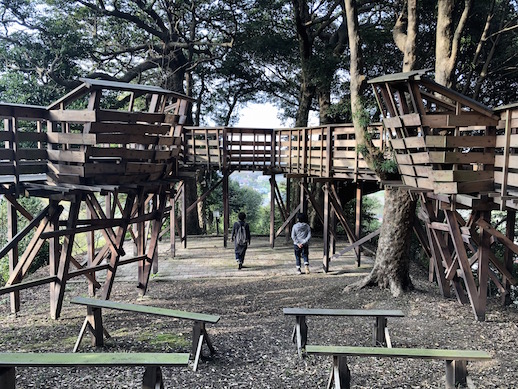
teamLab
The digital art superstars of teamLab have staked a claim on the city of Bungotakada’s Matama Beach. Like their other immersive installations across Japan and Asia, this one dazzles with mesmerizing light displays. Director Toshiyuki Inoko was apparently inspired by the local flora and envisioned an endless cycle of flowers blooming and withering. Visitors determine how the spectacle will play out through their own participation.
.jpg)
Yoko Ono
The Nagasakibana campground in Bungotakada is home to rolling fields of flowers like the yellow rapeseed plant that blooms in spring. Here you can find works by the international artist and celebrity Yoko Ono, who has placed 13 “benches” made of Kunisaki stone around the landscape. Accompanying each is a plaque engraved with the artist’s poems and instructions, such as “Listen to the world turn.” “Wish Tree,” another work by Ono, invites visitors to write their aspirations for changing the world on strips of paper and affix them to the tree. The wishes are collected and sent to Ono’s Imagine Peace Tower in Iceland.

Yodogawa Technique
The artist Yodogawa Technique (Hideaki Shibata) creates colorful sculptures from items that have been discarded or washed up on shores. Using bright plastic toys, electronics, and other objects, Yodogawa Technique has cobbled together a camel for the Nagasakibana campground. With humps inspired by the Kunisaki mountains, the camel – a symbol of travel – features cabinet doors on its stomach. Open it up and you’ll find jars of seeds you are free to take with you, setting them out on their own journeys. You are also welcome to make your own contributions to the camel.
.jpg)
Takahito Kimura
Takahito Kimura’s Sitting with the Sun is another work to enjoy at the Nagasakibana site. Kimura, an artist who creates works that experiment with nature, echoes the floral landscape with a pair of iron sunflowers on the beach. The shadows cast by the heads of the flowers offer shade falling over stones and pieces driftwood arranged as benches. The locations of these shady spots change with the time of day and season, creating different vantage points for moments of relaxation and gazing at the sea.
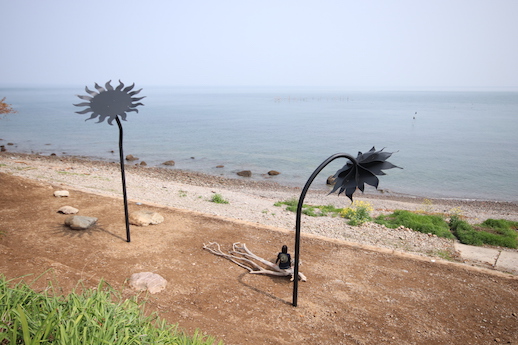
From the hot springs of Beppu to the coasts and peaks of the Kunisaki Peninsula, Oita Prefecture is a place of natural wonders that in recent years has come to host works by top artists. An ideal visit combines experiences of the area’s art, nature, and local culture. With creative initiatives like the ones led by Beppu Project ever-evolving, multiple visits are recommended.



